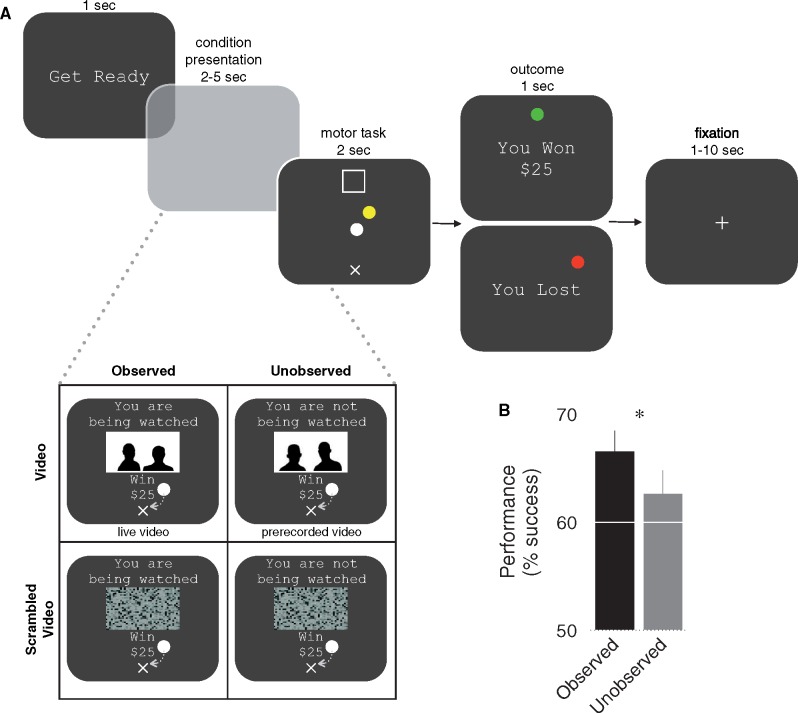Fig. 1.
Experimental task and behavioral performance. (A) At the beginning of each trial participants were informed about which experimental condition they were in. Trials were always for $25. There were two observation conditions: one in which participants saw a live video stream of people in another room who were evaluating their task performance (observed condition); and another condition in which participants saw a prerecorded video of people who were unfamiliar to them and not evaluating their performance (unobserved condition). These conditions had a counterpart scrambled video condition. During condition presentation, to initiate the motor task, participants placed their white hand cursor in the start position (x) for a random amount of time (2–5 s). During the task, a target (□) appeared that was registered to a position 20 cm distal from the start. To successfully perform the task, participants had to place their hand cursor and a mass cursor into the target within 2 s, while achieving a final velocity below 0.02 m/s. At the end of the trial they were shown a message indicating the outcome of their performance. In the case that a participant successfully placed the spring-mass in the target, a positive message was displayed (‘You Won $25’); otherwise, the participant was informed of her negative outcome (‘You Lost’). (B) Participants’ performance was significantly improved on trials in which their performance was observed by others (*P < 0.05). Error bars represent SEM.

